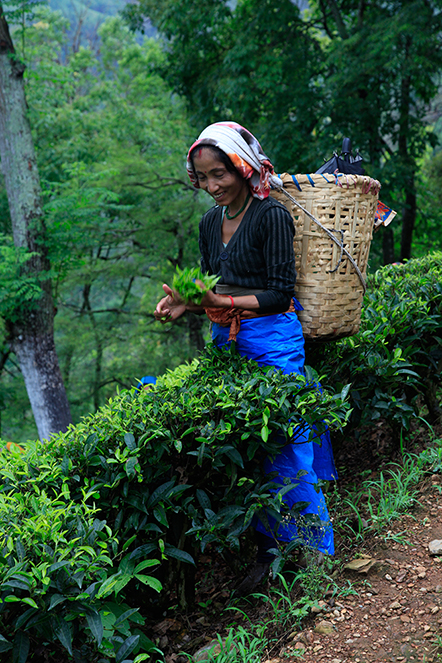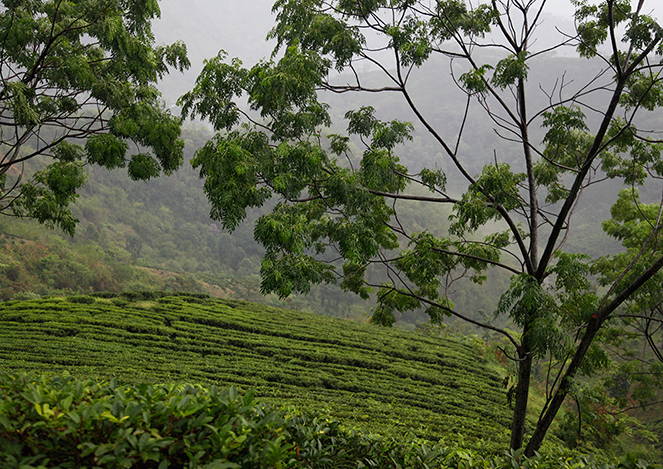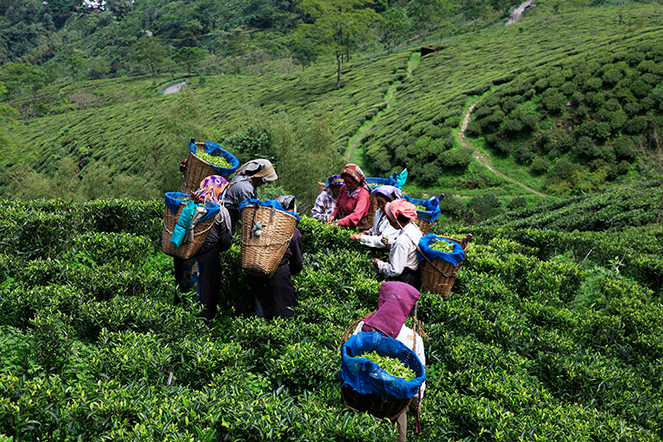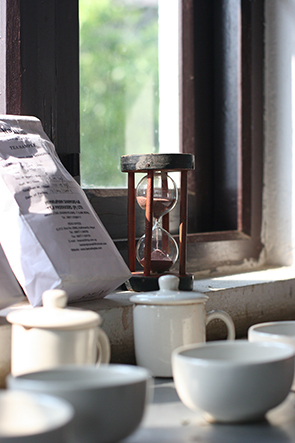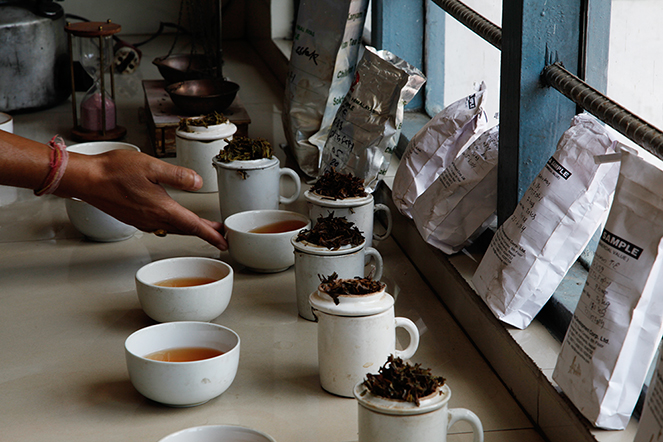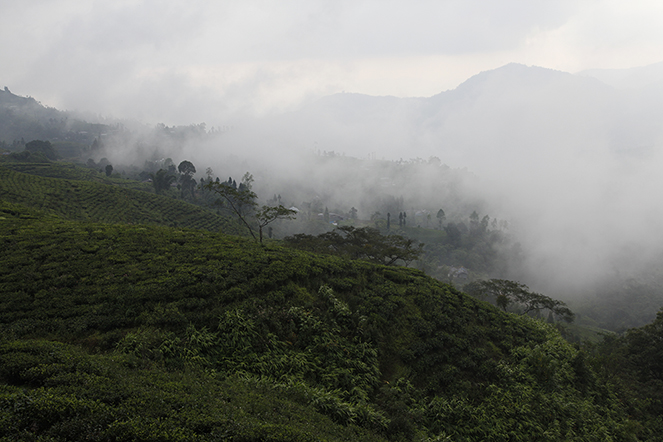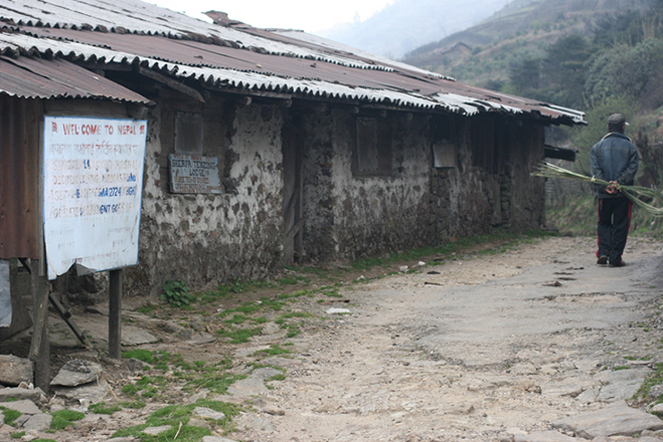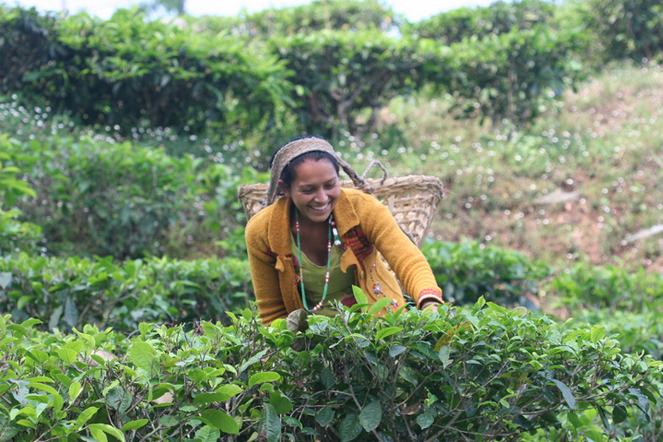It’s not an easy job, growing tea. In Darjeeling, after a winter that was too dry, it did eventually rain, but a few days ago an unusually violent hailstorm hit the region and caused considerable damage on plantations in the north of the district. Luckily, between the rain and hail, a few very good batches were produced, and I’m pleased to say that we will shortly be receiving some remarkable teas from Risheehat, Puttabong, Singbulli, Thurbo Moonlight, North Tukvar, DelmasBari and Turzum.
Speaking of Turzum, here’s a photo I took in March of Anil Jha, one of the three most respected planters in Darjeeling. Here, he is concentrating on the smell of the damp leaves that are in the lid of the tasting set.


